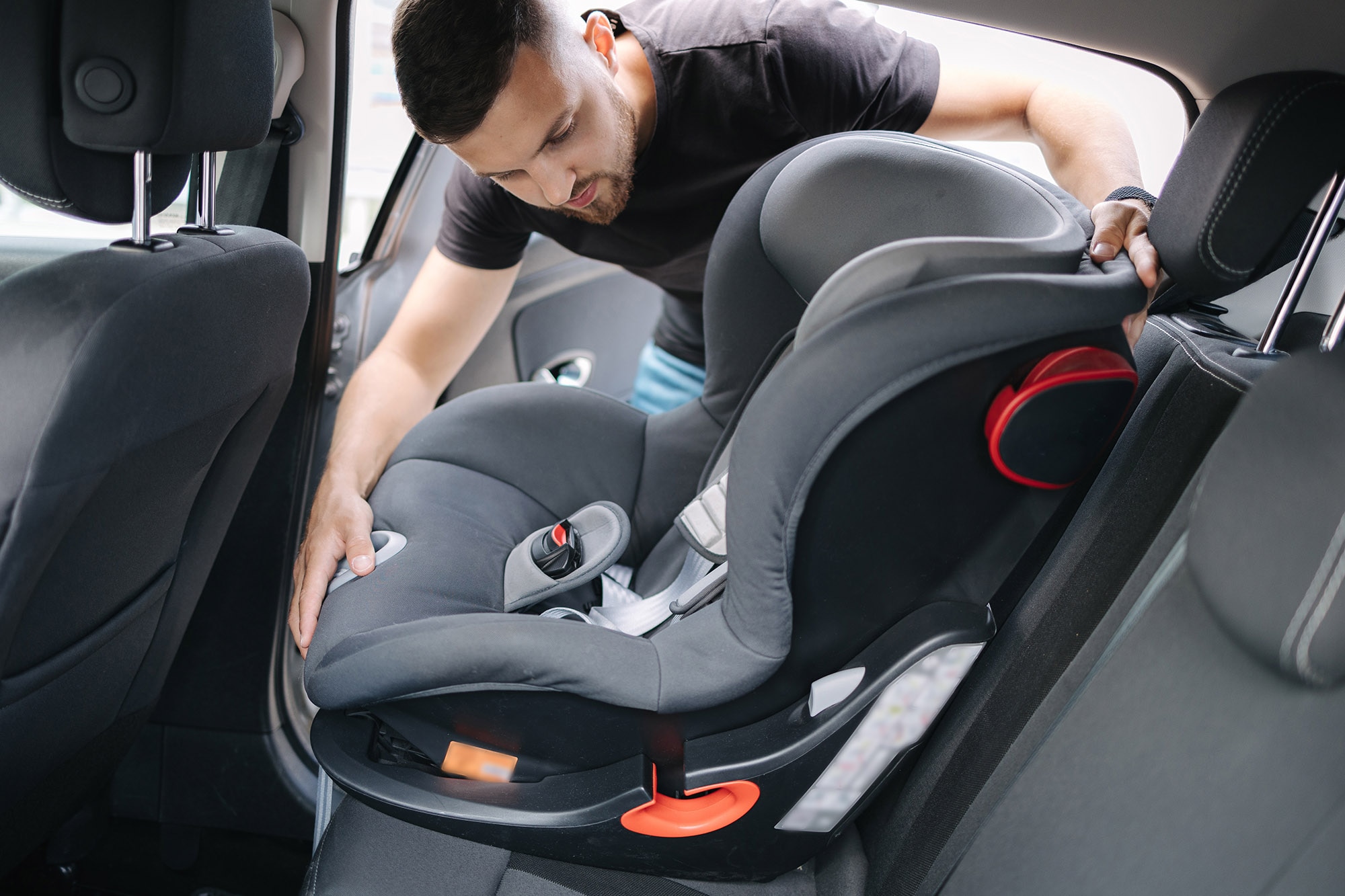LATCH vs. Seat Belt: What to Know About Installing Child Car Seats
There are several key differences between these two systems.
 Shutterstock
Shutterstock
When it comes to installing a child's car seat, there are two main options: LATCH, which stands for lower anchor and tethers for children, or a vehicle's built-in seat belt.
Both can offer a similar level of safety when installed correctly, so the decision between the two often comes down to personal preference. Here are a few things to consider when determining which installation method is right for you.
LATCH: Designed to Be Simple
The LATCH system, which consists of a pair of lower anchor points built into a vehicle's seats and a tether anchor located somewhere behind the seats, became mandatory for most new cars by 2002. The system can accommodate both rear- and forward-facing car seats.
The LATCH system was designed to be simpler to use than the seat belt-secured car seats offered at the time. Instead of wrestling with a seat belt, parents could just click in a few buckles and have a secured car seat with a quick tug of the tightening straps.
To further improve the installation process, the Insurance Institute for Highway Safety (IIHS) began testing how easy or hard it was to use a vehicle's LATCH system in 2015. The IIHS continues to issue LATCH ratings that can help parents decide which vehicle will take a bit of stress out of the car-seat-installation process.
Seat Belts: The Original Method
Child car seats that secure with a seat belt are among the oldest forms of in-car child restraints, dating back to the early 1960s. These types of car seats use a vehicle's factory-installed seat belts to securely cinch the car seat in place and, like LATCH, can be used in both rear- and forward-facing configurations.
Although safe when installed correctly, these types of car seats can be tricky to secure, especially when compared with the LATCH system. However, car-seat makers have improved their designs in recent years, including self-tensioning systems intended to make it just as simple to install a seat belt-secured child seat as it is a LATCH-based unit.
Considerations to Keep in Mind
Most modern child car seats are equipped with the ability to use both types of restraint systems, so you don't necessarily have to pick one or the other when buying a car seat. That said, the type of vehicle you're driving and the size of your child can play a role in how you secure your car seat.
You will likely need to use an upper tether when securing a forward-facing child seat. These tethers are generally located behind the seatback, on the parcel shelf below the rear window, or on the back of a pickup truck's cab.
If you have an older vehicle that lacks LATCH, the decision is made for you; using a seat belt for installation is your only choice. And even if your vehicle is equipped with LATCH anchors, you might have to use a seat belt based on seating position. That's because some vehicles only have bottom anchors in certain seating positions, such as the outboard seats of the second row.
The weight of the child is also a factor. While the LATCH system is capable of following a child from rear- to front-facing, there is a total weight limit of 65 pounds, which includes the child and the seat. Beyond that threshold, you'll need to use seat belt installation to ensure maximum safety.
When in doubt, read through the owner's manual included with your child car seat and don't hesitate to ask a professional.
Written by humans.
Edited by humans.
 Drew Johnson
Drew JohnsonI have been a professional automotive enthusiast since 2007, featured on several nationally-recognized sites. I attended Miami University, where I earned a business degree. Car nut at heart.
Related articles
View more related articles